Avon Van Hassel's Blog
September 2, 2025
The Time Machine: Hornbooks
This is a post straight from the brain archives of Baby Avon. When I was a little kid, I was OBSESSED with the American Girl books, and my second favourite was Felicity Merriman (my first was Samantha Parkington, obviously). If you’re not familiar, the original books were in six-part series, each focusing on a different aspect of a historical girl’s life, and each including a non-fiction afterword discussing real aspects of life, like technology and artefacts, little rhymes, important historical figures, and tradtions. The second book was usually [Girl] Learns A Lesson, which showed how education worked in that particular time period, as well as a life lesson the girl would take on, personally. Felicity (1774) went to ettiquette school, where she learned how to politely decline tea without ruining friendships, and navigate the delicate socio-political landscape in the days leading up to the American Revolution. In the afterword, we were introduced to how boys and girls were educated differently, and what sorts of things they learned. One thing that stuck with me was the hornbook.
~This post contains affiliate links. If you’re interested in any of these items, please consider purchasing through the link provided. It gives me a little bit of Jeff Bezos’ filthy, filthy lucre because writing full time is expensive, and he doesn’t need the money for more joyrides in space.  ~
~
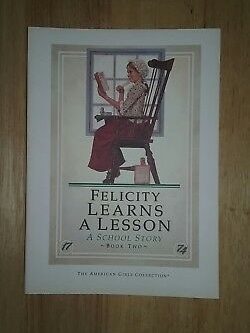
Like we discussed in the post about coffeehouses, this was the Age of the Enlightenment. And what’s fun is that that extended to children, too! The education of chldren has always been important for as long as people have had children- setting up the new generation is so universal as to be probably instinctual. Now, what that looks like differs across eras and cultures, so we’re going to just focus on the Enlightenment.
We all know the printing press was underway by Johannes Gutenberg in 1440, but contrary to popular belief, that did not necessarily herald a boom in widespread literacy like conventional wisdom postulates. The existence of printed media does make dissemination faster and easier, but it does not correlate to a universally literate population. Hell, media is more widespread now than at any point in human history, and the illiteracy rate in the United States is 21%, as of 2022. So obviously, literacy, defined as the ability to read short texts and understand written sentences, is an important skill, and one that has the capacity to grant access to better opportunities. This was just as important in the 1700s, and began much the same way it does today: learning to recognise the shapes of letters.
At its heart, a hornbook is a handheld tablet of wood or metal, with a sheet of paper or vellum with the printed alphabet, numbers, sometimes basic letter combinations, and short verses like the Lord’s Prayer, as an example of how the letters are combined to make words and phrases. These little primers are called abecedaria, which is a word I just now learned, and I’m obsessed with it. On top of this is a thin layer of mica or horn, hence the name, to protect it. It looks like a hand mirror, but with letters printed on it. Sometimes the handle had a hole in it so that the hornbook could be hung from a cord around the child’s waist so they could practice on the go.
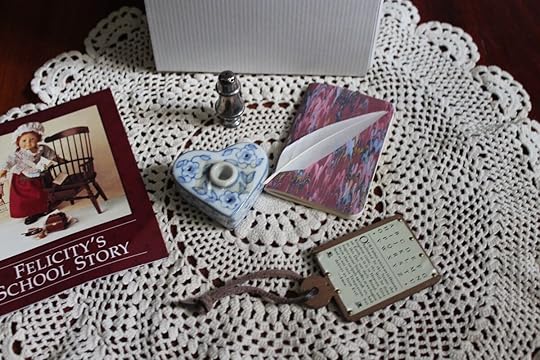 I completely forgot they sold her school supplies, back in the day
I completely forgot they sold her school supplies, back in the dayThey were called hornbooks, but they weren’t really books the way we think of books. they were not bundles of pages, but just the one sheet protected by the horn or mica. You might think that’s pretty limiting, but remember how complex language, especially written language, is. It takes a little while of repitition and memorization to get it. So, they would start with recognising the basic shapes of block printing, then learn the lower case shapes, then numbers, then how they all fit together, then they get to play with how words are made, and how they carry meaning. They would also usually have a tutor or governess who would guide them through how to use the hornbook, and as they progress into learning to write and imitate the shapes in their own hand, and how handwriting differs from print. It looks simple, but it’s actually a complicated little bit of tech that played a huge role in the literacy of a generation that had a lot to say.
Abecedaria are ANCIENT tools that lasted well into the 18th century, so by the time we got to this era, they were already on their way out, yielding to the advent of dedicated children’ literature. I’m playing with a Northanger Abbey sequel that includes an exploration of real-world children’s lit. In fact, the hornbook faded out so slowly that by the time 19th century antiquarians started selling them as antique collectibles, they were shocked by the scarcity. Most of them had been destroyed or misplaced over the years, just over the natural course of time, as things intended for children often were. It wasn’t until like the 1930s that childhood was seen as an important phase in human development. Childhood items were often handed down, repurposed, or simply thrown away when they were no longer needed, people weren’t as sentimental back then as we are now. Case in point, me still yapping nearly 30 years later about a thing I learned in a storybook related to a doll I wanted.
Full circle.
August 5, 2025
The Time Machine: Muskets, Rifles, and Blunderbusses- Oh My!
Explain it to me like I’m a gun-shy pacifist barefoot hippie leftist from Southern California.
-Me on Scribophile, asking for advice on writing guns
***Full disclosure*** This is a very short, very shallow general overview. I am not an expert on guns, I only know enough to write them into my stories, which are set in the 1790s-1810s. This post is intended to answer basic questions for the curious, not to serve as an extensive primer on how to find and use them.
The Journey to Europe
The earliest firearms, called fire lances, where developed in China in the 10th century. They were essentially bamboo or paper tubes filled with gunpowder, and would be affixed to the ends of spears, to shoot fire at the enemy. The tubes would be made into metal, with small projectiles added, and eventually developed into the hand canon in the 13th century.
By the 15th century, the firearm had spread throughout Asia and made its way to Europe in the form of the arquebus, which is immediately recogniseable as a gun. It has a shoulder stock, long metal barrel, priming pan, and matchlock (an ignition system using a long lit fuse used to light the powder)- and was crucially the first firearm to come equipped with a trigger mechanism.
Muskets
From the arquebus, we get the musket. The musket has a long and proud history in Western history. The word, musket, could come from from the French word for sparrowhawk, the Italian word for fly, or the French or Italian word for a crossbow bolt. Something small, fast, and often lethal.
The way a musket was loaded was to pour a little black powder into the pan (and cover with the frizzen to keep it in place) and the rest down the muzzle (either from a pouch or a pre-measured paper cartridge), followed by the wadding (either the paper from the cartridge or a piece of fabric rag), and ending with the lead or iron ball. The ramrod is pulled out from its place under the barrel and used to stuff everything in tight, then returned. To prime, you pull the hammer back to half-cock, or one click, and close the lid of the priming pan. To fire, you pull the hammer back one more click to full-cock, put the butt to the hollow of your shoulder, aim, and squeeze the trigger.
The musket uses a flintlock ignition system, where a piece of flint in the hammer strikes the frizzen, creating a spark, which falls on the powder in the priming pan.
A bayonet, basically a knife on a ring, could be added to the barrel to turn the gun into a spear, ideal for charging the enemy.
Compared to bows, the preferred weapon of Europe from prehistory even into the 1600s, muskets fired much slower. An archer could fire six arrows in the time it took a musketeer to load and fire one shot (musketeers could fire 4 shots a minute), though obviously musket balls did much more damage. If they hit, of course. Muskets were notoriously inacurate, especially at greater distances, and tended to backfire and injure the wielder.
Rifles
To combat (lol) these concerns, innovations were made to the barrel. It’s interesting to note how early these innovations were made, potentially inspired by archery, actually. Pretty early on, fletchers noticed how much more accurate their arrows were when they added a bit of spin to the feathers on the fletching.
Part of the issue with muskets is that the ball sits pretty loose in the smoothbore barrel (if you point the muzzle down, the ball can fall right out, lol), so when the gasses expand from the lit powder, the ball can bounce along the length of the barrel, which eats up a lot of energy, costing a lot of distance and making the accuracy a little unpredictable. The twisting grooves inside the barrel, the rifling, makes for a tighter fit, and as the gasses expand, they heat up the ball, which deforms to fill the grooves, then as it is pushed out, it spins in the grooves. That spin gives it greater distance and accuracy.
So, why didn’t everyone switch over to rifles? Well, that added little bit of innovation required a lot of extra time and skill, which made them a lot more expensive to buy, both personally and to outfit an army. They also took a lot longer to load. Typically, you could load and fire a rifle twice in a minute, with three being possible if the rifleman was really quick.
So, that math is 2 (and a half, let’s say) shots per minute for a rifle, 4 per minute for a musket, and 24 arrows per minute for a skilled archer. Now, the accuracy: muskets have up to a 48% accuracy at 200 yards, and 18% at 300. That’s a sharp dip. Rifles have 58% at 300 yards and 42% at 500. I don’t have the numbers for archery because there are SO many factors, like wind, altitude, draw weight, skill of the archer, etc. But it also needs to be noted that ammunition has an effect- musket balls can be made in the field by melting lead and pouring them into moulds, whereas arrows take a lot of time and skill to make something that will fly straight. So, yeah, the popularity of the rifle makes sense.
Now, there are no rifles in my books, yet. Like I said, I had to include rifles in the post becase it’s hard to talk about muskets without also discussing rifles. However, neither of my characters would be able to afford to buy a rifle, and by the time they can, they don’t have the immediate need for one. Alois was part of an elite regiment during the war, but the way weapon innovaton happened in the history of my books, the ironmongers favoured power and speed over accuracy, which I will go into a bit more later.
Blunderbusses
The blunderbuss is not a progression of the musket-rifle, but more a cousin of the arquebus, the shorter, stockier, louder descendant of the hand canon, and the ancestor of the shotgun.
The word comes from Dutch, meaning THUNDER BOX, which is charming; mixed with ‘blunder’, meaning to confuse, which seems to be a reference to how goddamn loud and disorienting it is. Sulat carries one, and she is not a subtle lady.
The blunderbuss has a short barrel with a flared muzzle, designed to fire shot (pellets) or other large projectiles. Basically, you can load it with anything, from a handful or gravel to a musket ball. It is also a flintlock, with a load of brass hardware, in addition to the ironwork
Bonus: Alois’ Dragon Pistols and the Ettin Gun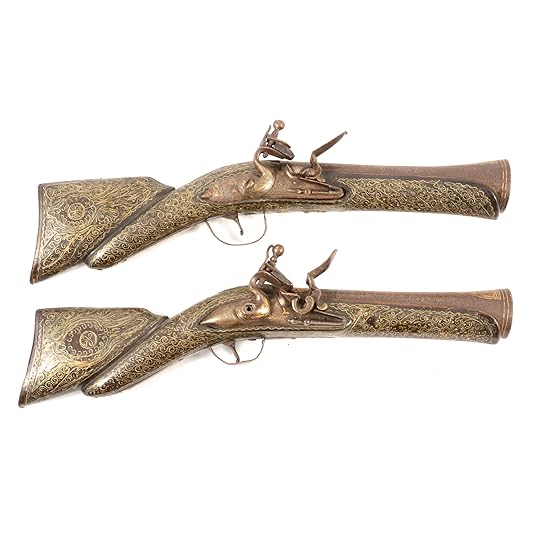
Ok, so those are the recogniseable guns that you’ll see in my books. But there are two more types that are mentioned frequently: Alois’ pair of dragons and his Ettin Gun.
A dragon or dragoon was also a real gun, basically a pistol version of the blunderbuss. It was much shorter, and still designed for shot and still very loud. It was called a dragon because of how intimidating that report was, but also because they tended to be carved with dragons along the brass barrel, which is kinda cute. Alois carries a pair of them. He is a better swordsman than Sulat, but a worse shot; she is a better shot, but her slight build means she prefers to fight from a distance.
~~
The Ettin Gun is my own invention. It is a combination between an elephant gun and a 4-barrel pistol, which are both real guns. Multiple-barrel guns, like the rotating pepper-box, are nothing new. They allow multiple barrels to be loaded at one time, though the single flintlock mechanism requires that each be primed individually. Still, it cuts back on load time significantly.

The elephant gun was developed much later, as Europeans stormed into Africa for the purpose of big game hunting. My military engineers had to speed up the timeline a bit to deal with the invasion of two-headed giants onto their own lands.

The combination created a giant 4-barrelled musket that required extensive training, a tonne of equipment, and a weilder with enough shoulder meat to handle that kind of kickback in rapid succession. Alois still has his Ettin gun, but its inherent value and scarcity since the end of the war makes it something of a theft liability, so he keeps it hidden away.
~~~~
So, there you have it, a brief toe-dip into the world of popular flintlock guns. I have seen some fun novelty ones, like a rifle with a heart-shaped muzzle. What other interesting weapons would you like to see me explore?
July 1, 2025
The Writing Desk: The Inspiration Board
Writing is hard.
It’s not laying bricks or open-heart surgery, but it is definitely challenging. It’s made doubly challenging when you’re trying to make a regular habit of it. The conventional wisdom is that you have to exercise it like a muscle, right? Do it consistently, and eventually, it gets easier. But getting through the mushy middle to the point of consistency can be tricky.
For times like these, I invoke the humble Inspiration Board.
What is an Inspiration Board?At its most basic level, and inspiration board is a visual representation of your story. A lot of times, the germ of a story comes from a vibe or a line from a song or an image- one tiny speck of nothing that blooms in your mind into an idea you can’t let go. The inspiration board seeks to capture that, so you can access it whenever the excitement starts to wane. It’s how you rekindle that initial spark.
It can also help play with new ideas- things you want to try, ideas you don’t have a place for yet but that you don’t want to forget, other vibes or images that tickle the same place in your brain as the originals.
What goes on an Inspo Board?So, I do have a template I use for my normal Inspo boards, and I will post it here for you.
 A quick one I whipped up for Magic Beans
A quick one I whipped up for Magic BeansHowever, there are a number of different styles of boards. Mood boards, inspo boards, 5 year plans, dream boards, vision boards, motivation boards. There is obviously a lot of overlap between the different types, so knowing which kind you need is important.
This might sound like a bit of a departure, but stay with me: why do you want to write? And follow up: what do you want to write? Finding your why and your what will help you with your how.
Writing for yourself and writing for a career are totally different beasts. If you’re writing for a more informal context, you can base your board around vibes. Focus on colours and textures and tone. If you’re hoping to publish, you have to be quite a bit more detailed and specific.
Where to Find Your ImagesAgain, this depends on your needs. If it’s just for you, Google Images is great. If you’re hoping to show it to the public, be aware of the ethics of sharing images and get familiar with copyright laws.
The best source is hand drawn art, either by yourself or another human. I am 100% of the stance that AI art is theft. Just to get that out of the way.
If you’re not a good enough artist for your needs and can’t afford to pay someone, don’t discount stock photo archives. Here is a list of great image sources. And there’s nothing wrong with using an image with a watermark. It doesn’t look as nice, but it’s a way to get a perfect image for free.
Canva (has many great free options) Pixabay is my favourite Pexels Unsplash Flickr Ok, Now You Have Your Board, How Do You Use It?There are a few uses for these boards. The main one is to inspire you, to keep your excitement high, to keep your mind sharp.
You can also use it to introduce your work. You can send it to your betas to make sure your finished wip matches the vibe you were going for.
You can also use it for marketing. You have a built-in brand package, from colours to symbols, from original or stock art to mood. You might have already included comparisons to other similar works. You can use it as a launching point for an ad campaign or cover design, you can even share it around in its raw form to drum up interest.
~~~~
So why are you interested in Inspo boards? What sort of things will you be sticking on yours?
June 3, 2025
The Time Machine: Coffee Houses
If you’re here on my blog, you probably love a coffee shop. (If you’re a tea-only person and prefer the tea house, I have a post for you, too)
How many of you have pitched a laptop or tablet at a rickety table with a hard wooden chair, listened idly to the hum of chatter, the clinking of ceramic, and the growl of the milk steamer? Bang, bang, bang, goes the barista, before locking fresh espresso back into the machine. They call your name and you grab your hot black essence or blended tan cloud and cling to it like it’s the actual nectar of the creativity gods, infused with inspiration and focus. The warm, toasty aroma surrounds you, the noises fade into the corners of your awareness, and you just know you’re going to get So Much writing done.
Or maybe you’re there to meet a friend. You chat about anything and everything, while the world, including the drink you went there for, falls away. It’s a vehicle, really, an excuse to spend time together and get caught up on the news of the day, as much a setting detail and prop as the chalkboard displaying the day’s special and some witty pun.
A lot of you probably remember the Starbucks boom in the late 90s-early 2000s. It seemed like overnight, there were diners where you could get coffee and then suddenly, there were Seattle-based megachains and drive-thrus everywhere. Well, Starbucks did not invent the coffee shop craze. 200 years earlier, they were all the rage.
~This post contains affiliate links. If you’re interested in any of these items, please consider purchasing through the link provided. It gives me a little bit of Jeff Bezos’ filthy, filthy lucre because writing full time is expensive, and he doesn’t need the money for more joyrides in space.  ~
~
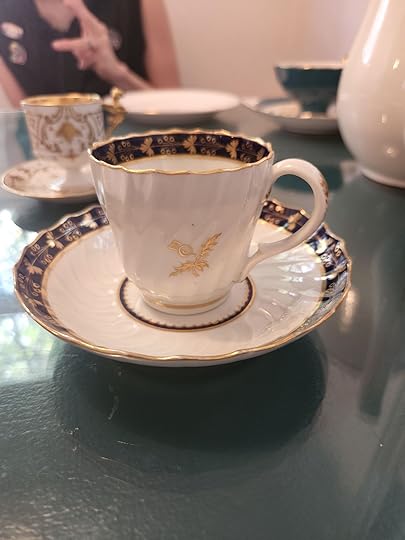 An authentic coffee cup from the 1790s, my friend generously allowed me to use in my YouTube video!
An authentic coffee cup from the 1790s, my friend generously allowed me to use in my YouTube video!Coffeehouses in the Georgian era looked a lot like how we expect them to: comfortable furniture, bookshelves, tasteful decorations. And part of that is because of branding. Coffee was perceived as the anti-alcohol. It stimulated rather than dulled, invigorated rather that sedated, it encouraged calm intellectual discourse rather than feuling baser passions. No one ever started a brawl because they had too much espresso. At least, that was the perception, as we’ll get to, in a moment.
You see, this was the Englightenment, a period of time when Europe was spending a lot of time thinking. They were debating the nature of Man, of government and kings, of God, of the structire of society, of the past and present and future, or money, of art, of the science of the earth and the stars. They were thinking about thinking. And they were gathering to talk about what they were thinking about. Coffee culture was caused by the Enlightenment, and it fuelled it. People (men) from all walks of life gathered in these comfy, well-outfitted coffee houses, and discussed the matters of the day.
So what did they actually serve?
Coffee at a coffee house was more like diner coffee then, than what we think of today. It wasnt thick foamy espresso or a blended drink that, let’s face it, is a coffee flavoured milkshake. It did often have milk and sugar, and just a little fish bladder.
Well, fish bladder or skin; egg whites or shell. Let me explain. The recipe, pasted below, from Maria Eliza Kettleby Rundell’s 1808 cookbook, New System of Domestic Cookery, calls for the boiling of coffee grounds for a total of eleven minutes, with at least ten minutes of steeping time. That makes a muddy coffee. Isinglass is a sort of gelatin-like substance made from the swim bladders of fish like sturgeon. It’s the collagen, present in eggs and actual gelatin, that will soak up those impurities like a magnet and rise to the surface in a kind of foam, which you can skim off. This creates a wonderful clarity and gives it a bit of a smoother mouthfeel, that some might find negates the need for cream and sugar at all.

For those of you struggling to see the image, here is the text:
Put two ounces of fresh-ground coffee, of the best quality, into a coffee-pot, and pour eight coffee-cups of boiling water on it; let it boil six minutes; pour out a cupful two or three times, and return it again; then put in two or three isinglass-chips into it, and pour one large spoonful of boiling water on it; boil it five minutes more, and set the pot by the fire to keep it hot for ten minutes, and you will have coffee of a beautiful clearness.
Fine cream should always be served with coffee, and either sugar-candy or fine sugar.
If for foreigners, or those who like it extremely strong, make only eight dishes from three ounces. If not fresh roasted, lay it before a fire until perfectly hot and dry; or you may put the smallest bit of fresh butter into a preserving-pan of a small size; and when hot, throw the coffee in it, and toss it about until it be freshened, letting it be cold before ground.
Now, if you’re more of a visual person, fear not! I made a video, showing you how to do it!
Coffeehouses were often called penny universities, or universites in a cup (one article on the subject called them the internet in a cup, which I don’t disagree with), because for the price of a penny at the door, you could get a cup of coffee, all the extras like milk and cream, and any other services the house provided. For a penny, you had access to whatever conversations were going on. People from all walks of liife could mingle and get different perspectives, they could hear the news of the day (newspapers were performed out loud), they could interact directly with politicians, clergy, gentry, the business owners, ‘the middling sort’ (middle class people), writers and artists, foreigners, day labourers, and even criminals. Some people spent so much time at coffee houses that they listed the house as their mailing address!
Now, of course, it wasn’t just coffee sold here. There was a healthy dose of elitism about coffee house being temples of rationalism vs taverns and alehouses etc as dens of sin, but the line between them was a lot more blurry. People are going to make money however they can, and if the intellectuals want beer and gin, they’re going to get it.
One notorious coffeehouse went a step further. King’s Coffee House, run by Tom and Moll King, and known colloquially as King’s College, served as a sort of brothel-adjacent venue. They couldn’t host sex workers because that was illegal, and in fact the only bed on the premises’ was the Kings’ own, but they did host sort of meet-cutes for sex workers to meet with potential clients and take them elsewhere to perform their services.
So I mentioned earlier how The Enlightenment and coffee culture influenced each other, and now that you’ve seen how people came together over a hot cup of Joe, with even the consideration of foreign tastes written into the official recipe, it’s not hard to see how the inevitable outcome was rapid and vigourous social change. When people from different backgrounds, with different experiences and obstacles, come together and talk, it’s difficult not to be affected.
This was a classic example of a third space, a place for people to go other than work and home. At the affordable price of a penny, a man could gain access to news and ideas, and make his own voice heard, which was a level of social fluidity rarely seen before.
Now, of course, this is a very shallow understanding of the coffeehouse and the impact on society and history. If you would like a deeper dive into the rise and fall, the role of women, and other social criticisms, do let me know. I actually would love to look closer, as well as at the real meat and potatoes of the tea trade. Let me know!
In the meantime, check out my video on YouTube!
May 6, 2025
The Storybook: Klio and Euterpe
So, every so often (usually when Facebook won’t let me share posts to my author page), I poll the Misfits about the kind of posts they’d like to see me write about. One of the most popular ideas was mythology related to gods and spirits ruling over the domain of creativity. So, who better to start with than the actual Muses?
*sigh* Full disclosure, I’m not an ancient historian or a classicist. Yes, I have a degree in archaeology; yes, I’m a big nerd whose favourite hobby is research; and yes, I am a pagan who kinda-sorta works with one of the Muses. None of that makes me an expert in Greek mythology or history. There is so much, you guys. The problem with ancient stories and religion is that their history is long, complicated, and shifts wildly over time and region.
Just thinking about someday having to talk about Thoth (or, really, any Egyptian) makes my chest feel tight and my eyes moist. I mean, I’ll do it, but the dread is real.
So, with that in mind, let’s lower the expectations, and move forward.
The Muses, like a lot of figures in Greek mythology, likely predate Greek culture, and might come from the Thracian Empire, which recognised 3 Muse-like figures. It seems like we decided ultimately on 9, mostly because famous poets like Homer said there were 9.
So, with all of that out of the way, let’s carry on. When last we spoke of the Muses, I touched a bit on the history of how The Muses came to be, what they collectively represent, how to approach them. I also touched a little on Calliope, Queen of the Muses, and my personal muse. This year, I’m going to introduce Klio and Euterpe.
~This post contains affiliate links. If you’re interested in any of these items, please consider purchasing through the link provided. It gives me a little bit of Jeff Bezos’ filthy, filthy lucre because writing full time is expensive, and he doesn’t need the money for more joyrides in space.  ~
~
‘Kleio’ with a K means, ‘to exalt’ or ‘to celebrate.’ The spellings are interchangeable, but the K is thought to be more accurate to her original name.
With her parchment scrolls, open books, tablets, and trumpets, she is called, ‘the Proclaimer,’ and her symbols also include water clocks and laurels.
This glory and time association makes her the muse of history. She is the muse who tells the great true stories of war, love, and cleverness.
One funny story is that she mocked Aphrodite for falling in love with Adonis because Aphrodite is a mess. So in revenge, Aphrodite cursed her to fall in love with Pireus, son of King Magnus, with whom she had a son, Hyacinth. Hyacinth was famously a lover of the god, Apollo (who is sometimes romantically involved with all 9 Muses, yikes), as well as the West Wind, the North Wind, and a mortal Spartan singer.
So like, yeah your boyfriend may be a pretty boy, but my son is THE pretty boy. Bit of an own goal, there.
How to invoke
Set laurels on your altar, wear laurels in your hair or on your head. Proudly proclaim your accomplishments, past and present.
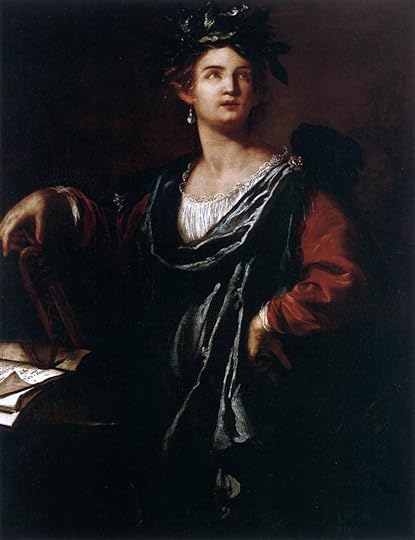 Clio by one of my faves, Artemisia GentileschiEuterpe
Clio by one of my faves, Artemisia GentileschiEuterpeEuterpe’s name means, ‘bringer of delight’ or ‘rejoicing well.’ She is generally regarded of the myse of music and lyric poetry.
Lyric poetry, for those who have heard the term over and over, but never an actual explanation for what it is, is a type of poetry, usually accomplished by music, that explores emotion and feelings in the first person. Very recogniseable, even today, as most of the songs you like. That’s Euterpe.
She is also thought to be the inventer of the aulos, or the double flute, as well as other wind instruments. For this reason, she is the muse of musicians and performers.
 Euterpe by Jean-Baptiste Auguste Clésinger, on the grave of pianist, Frédéric Chopin
Euterpe by Jean-Baptiste Auguste Clésinger, on the grave of pianist, Frédéric ChopinHow to invoke
Play music, especially music you wrote. Pray to her before writing new music or poetry
~~~~
If you love the Muses and want to explore modern Greek myth a little more, have a look at my sister’s book, Mount Helicon.

April 1, 2025
The Writing Desk: Time Blocks
Every year, I poll the Misfits, and every year they vote ‘time management’ as the topic they most want advice on. I can relate, I also struggle with it. But I do have some tricks, and maybe this one will help you.
Time BlocksThese three techniques are simultaneously totally different, and basically the same. They’re really all about concentrating your focus on one thing at a time.
Time blocks are chunks of time set aside for a task, in this case, writing. Do you have a full time job, or do you have erratic hours? Do you stay at home with young children or other people who need round-the-clock care? Do you have your own health issues that prevent you from sticking to a writing routine? That’s fine! Time blocks could be the answer.
Time blocks allow you to find the times of the day or week where you can dedicate your energy to writing. For me, it’s Monday-Tuesday-Thursday-Friday mornings from 8-noon. My mental power is strongest in the morning, but I burn out after a few hours of rigorous mental work, and I dedicate my afternoons to my house, family, and volunteer work.
Your best times might be after the kids go to bed or are at school, maybe it’s your lunch break, maybe it’s in a different place every day. The important point is recognising where it is in advance so that you can build a ritual around it, rather than trying to seize it when it comes. It’s hard to be creative when you’re hunting for minutes.
So once you identify your time block, how do you defend it? I’m not going to lecture parents about making time for yourself or preach at line cooks about prioritising your creative life. This shit is hard, and sometimes it is the easiest thing to sacrifice in favour of everything else.
But if you are able to get the time and energy together at the same time, sometimes your brain fights you. In these instances, you can yank it back on board by activating a mini ritual. If you’re in a safe but noisy environment, you might try headphones or earplugs. If you’re at home, grab a drink and light a candle. It doesn’t need to be elaborate, it just needs to signal to your brain that, ‘right, we have 30 minutes. Let’s get some words down on paper.’ And remember that what you write doesn’t have to be perfect, but it does have to exist. You can always edit during a time block, so the time will come to make it look nice.
You can also combine time blocks with other techniques like dictation and the Pomodoro Method.
Task BatchingTask batching is all about flow, and it’s one of my faves. Basically, you break down your big tasks into smaller tasks, decide what order they go in, and do all the similar tasks at the same time.
For instance, when I’m planning my blog posts for the year, I break them down like this:
TitleOutlineDraftEditDesign cover images and Instagram postsAdd picsAdd linksEdit againAdd tagsScheduleSchedule social media postsSo, when I sit down to start my blogs, I open twelve new blog posts and title them. Then I go through each of them, setting up the topics I want to talk about. Next, I take a couple of days to write the actual post themselves (what you’re reading now was written during the Draft batch). Etc, etc.
The downside of this technique is that everything is done all at once, so if you don’t finish all of them, you don’t finish any of them. This is what happened last year. But if you find the cycle of ‘plan, write, edit, publish, plan, write, edit, publish, plan, write, edit, publish’ a little overwhelming, this might be one for you to try.
Micro-scheduling vs Day ThemingMicro-scheduling and Day theming are pretty self-explanatory. Some people benefit from a strict routine, and some need a bit more flexibility.
A micro-scheduled four-hour block might look like:
First hour: Pomodoro (25 mins of writing, 10 min break, 25 mins of writing)Second hour: Research and plan for tomorrow’s workThird hour: social media postsFourth hour: read fictionThis works great if you have a solid four hours with no threat of interruption, even from your own attention span. Or if your the sort of person who really needs strict structure.
Day theming is kind of the reverse, but not really. A four-day work week might look like:
Monday: draftingTuesday: researchThursday: social media postsFriday: read fictionThis works great for people with less reliable time blocks, or who need more flexibility in their structure. Four hours of drafting is four hours of drafting, whether it’s done in the same day or over the course of a week.
~~~~
Do these ideas work for you? Are there any you’re excited to try? What techniques do you use?
March 4, 2025
The Time Machine: Gardens, Part 3-Capability Brown
Ordinarily, I don’t like to do too many similar posts in a row, and I know I’m posting a biography directly following a double biography, but I have to strike while the iron is hot. I’ve just arrived home from a trip to the UK, where I visited one of his gardens, so it’s relevant. Plus, what better time to talk about gardens than the spring?
Lancelot Brown was born on August 30, 1716, in Kirkharle, Northumberland. His mother, Ursula, worked in service for Sir William Loraine at Kirkharle Hall, where his father, William Brown, was the land agent. After school, Lancelot got a job at Kirkharle, working for the head gardener’s assistant in the kitchen garden. When he was 23, he began moving around the country, working in various gardens until he got his first commission, a new lake in the park at Kiddington Park, Oxfordshire.
In 1741, he went to Stowe Gardens, where he worked under William Kent, probably Britain’s next most famous gardener. He stayed here for nearly ten years, during which time, his employer, Lord Cobham allowed him to take freelance commissions from other landowners, which helped him grown his reputation as a landscape gardener. He was a skilled horseman, and that allowed him to not only travel quickly, but assess the properties quickly. Indeed, he earned his nickname, ‘Capability,’ from his habit of telling people that their land had capability, or potential, for improvement.
In the 1760s he was already known to the Crown, having been appointed by King George III as Master Gardener at Hampton Court Palace, and he was earning enough from commissions to buy an estate off the Earl of Northampton, where he was appointed High Sheriff of Cambridgeshire and Huntingdonshire. Not bad.
On February 6, 1783, he suddenly collapsed on the doorstep of his daughter’s house after a night out, and subsequently passed away. He was buried in the churchyard outside his estate, and left what would be valued at £6m to his family.
Famous gardensSeveral of Brown’s gardens survive to this day. You may have heard of some of them
Cardiff
Nearest and dearest to my heart, is the central courtyard of Cardiff Castle. We’re going to cover in a second why I didn’t appreciate it at the time for what it was.
For those of you who don’t know, I am an American, but I went to university in Cardiff. I got my undergrad in Archaeology there, so I was there for three years, and obviously, as a medievalist, I spent a lot of time at the castle. A lot of the recogniseable details of Cardiff Castle are attributed to the Marquis of Butte, who’s aesthetic is on full display in the Tý, or House, the residential part of the Castle, where the Marquis and his family actually lived. However, the most seen and used area, the courtyard and Norman Keep on its lil motte (or small hill inside the castle), are the work of Capability Brown.
Now, as the name implies, the Norman Keep does date back to the Norman Conquest. Brown didn’t build that. But the motte originally had a moat, which he filled in, and he added a spiral path up the motte, which was replaced later by a staircase at the front. You can still see indentations of the spiral path, though. He also removed all of the other small buildings and a full height wall, complete with its own buildings, which had spanned the distance from the gate entrance to the Keep. The foundations of that wall are still there, but it is said that the stones from that wall built many homes in Cardiff after that. The result was a flat, smooth lawn, with the Norman Keep standing proud in the centre.
StyleWhen I was doing research for this post, I came across the extant garden at Cardiff Castle, and I was very confused. Garden? What garden? I’ve been all over that castle, where is the garden? There are gardens and parks all over Cardiff, but no, they’re talking about the one inside the Castle.

Right there.
That one.
You’re looking at it.
The confusion came from not yet fully understanding the aesthetic of 18th century gardens and Capability Brown’s influence, specifically. I knew he was a big deal, I knew the name, but gardening, to me, was very much hedge mazes and rose bushes, that is the exact opposite of what we’re looking at here.
To understand, we have to look back, back further than the 1760s. That sort of formal, geometrical style of gardening was the norm for most of British history, and it came back after Brown. It takes a lot of upkeep, which requires a gardening staff, which is a form of conspicuous consumption; it often features exotic plants, which shows off wealth; and it takes up massive parcels of land that could be used for crops but instead is used for leisure and beauty. Also pretty plants with pretty smells. You get it.
Enter, the Enlightenment. What is the nature of Man? What is the nature of nature? Is man higher than God?
Also, tension was cooking in Europe, so travel to Europe was awkward. Brown died before the French Revolution and the following Napoleonic Wars, but he would have known about the American Revolution. Change was in the air.
At this time, we had the birth of the staycation, or their version, which was taking sketching holidays to the Lake District. Basically, they were stuck inside the house and were forced to appreciate what they had. Britain learned to fall in love with their own natural beauty. It was a very pariotic time.
Capability Brown was a pioneer in this area. When he said a property had capability, he meant it had natural beauty he could enhance. He loved a flat lawn, or a gently rolling hill, maybe an accent bush, like a beauty mark on the upper lip of a fine lady. Not for him was the hedgerow or orchid house. The idea was a vista, wide open space- a pastoral countryside captured, tamed, and nurtured within the property of a landowner. The simple, unadorned, natural beauty of Britain. Nothing fussy or frilly. Look at the gardens at Versailles- you wouldn’t want anything fake and French like that, would you? Ew.
And people ate it up. It was the minimalism craze in the 1760s. Rich people love conspicuous underconsumption, as well. It’s still a lot of perfectly good land that just…had nothing on it lol, and a massive staff required to keep that lawn looking meticulously unmanicured. It requires the same amount of upkeep, it’s every bit as curated and deliberate as a more traditional looking garden.
But god, they make for some really nice paintings. The picnics you could have on that lawn, can you imagine?
So that wide, smooth, flat lawn with a tidy Keep on a moat-less motte at Cardiff Castle? That IS the garden.
February 4, 2025
The Time Machine: JRR Tolkien vs CS Lewis
My February posts
A few years ago, I wrote a Valentine’s Day blog about Napoleon and Josephine, and it kind of morphed into the dynamics of relationships between famous people. In 2023, we had fun with American literature heavyweights, Herman Melville and Nathaniel Hawthorne. So, today, we’re looking at two heavy hitters of English fantasy: JRR Tolkien and CS Lewis.
~This post contains affiliate links. If you’re interested in any of these items, please consider purchasing through the link provided. It gives me a little bit of Jeff Bezos’ filthy, filthy lucre because writing full time is expensive, and he doesn’t need the money for more joyrides in space.  ~
~
John Roland Reuel Tolkien was born on January 3, 1892, in Bloemfontein, in what is now South Africa, to Mabel and Arthur Reuel Tolkien, who was a bank manager. At the time, South Africa was under the rule of Great Britain, and Arthur Tolkien was the head of the Bloemfontein office of the Bank of Africa, which was actually a British bank.
Mabel took John and his younger brother, Hilary, to England when John was three. It was meant to be a long visit with family, but while they were there, Arthur, who had stayed behind in South Africa, died, of rheumatic fever, leaving his wife and two kids stranded in England with no money. Mabel landed with her parents in Birmingham.
Tolkien’s time in Birmingham seemed idyllic. I’m not going to spend much time exploring his early childhood, but as it happens, I’m going to be passing through Birmingham this month, after a wedding. So keep an eye out on the socials to see what I get up to!
From an early age, Tolkien was interested in languages and could read and write fluently by the age of four. In 1900, when Tolkien was eight, Mabel converted to Catholicism, and Tolkien himself would remain a devout Catholic the rest of his life, which would influence a lot of his work and cause many a rift in his personal life.
In 1904, Mabel died of Type 1 diabetes, as insulin wouldn’t be discovered until 1921. Guardianship of John and Hilary was transferred to Father Francis Xavier Morgan to raise the boys as good Catholics. Tolkien seemed to love Father Francis, who gave him a good upbringing and encouraged his curiosity.
In his youth, Tolkien and some cousins invented their own language while he was learning Latin and Anglo-Saxon. He also learned Esperanto, because of course he did, the big nerd. It was around this time that he also began his first secret society, which centred around drinking tea. I love him so goddamn much.
In October of 1911, he started studying the classics at Exeter College, Oxford, but switched to English language and literature in 1915.
I don’t want to spend too much time on his adorable romance because this post is about a different relationship, but it is relevant. He met Edith Mary Bratt when he was 16 and she was 19. He and Hilary moved into the same boarding house where Edith lived. They clicked immediately, and one of their date things was to sit in an upper story of a tea house and throw lumps of sugar into the hats of people passing below. This was a problem, though, because she was Protestant. Father Francis forbade Tolkien from seeing her anymore until he was 21. So on the evening of his 21st birthday, he wrote a very Wentworth-esque letter to Edith, who, it turned out, was already engaged. However, like Anne, she promptly dumped the dude she was engaged to, because she, too, had never stopped loving John. My heart. Her ex-fiance and his family were suitably annoyed, but what can you do? Edith did convert to Catholicism, though it seems more for John than out of true belief; but it nevertheless forced the person she’d been living with to kick her out. They were formally engaged in 1913.
Maybe one day, if you guys are interested, I can do a post just on Tolkien and Edith. Or Beren and Luthien, as it were. IYKYK.
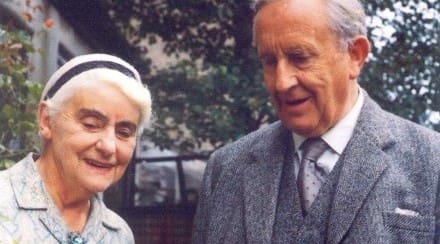
I also don’t want to dwell too much on the War. This isn’t just about Tolkien (and if it were, this post would be MUCH longer, the dude was fascinating), but it is relevant not only to his work, but his worldview and relationships.
Tolkien actually didn’t voluntarily enlist immediately, as was expected at the time. He wasn’t outright accused of being a coward, but he did seem to be uncomfortably self-aware of his unsuitability for combat, and chose to ask for a deferment, so that he could finish his degree. By the time he did finish, people were beginning to make their disapproval more vocal. He married Edith in March of 1916 and in June, he got his letter. Parting from her, amid the deaths of thousands every day, must have been hell.
During his time in the trenches in France, he lamented his position as an officer, feeling a kinship with- but forced by protocol to remain above- the lower men. He contracted trench fever from the lice, and lost many of his men, including a couple members of his very first secret society, at the Battle of the Somme.
Because of his trench fever, he was sent back to England to recover, where he was involved in the efforts of the Home Front. It was during this time that he first began his attempt to construct his fantasy series, trying to devise a mythology for England.
It always struck me as funny that Tolkien didn’t think Britain had a proper mythology tradition. They have King Arthur and Robin Hood and all the fairy tales and folk tales, and you know, the quite a bit of Celtic and Anglo-Saxon mythology. But maybe I’m just easy to please, I dunno.
Anyway, he spent the rest of the war in England on disability and officially left the military in 1920, but kept his rank as lieutenant.
In 1918, his first civilian job was helping with the Oxford English Dictionary (yes, that one), inspiring one of my favourite memes of all time:
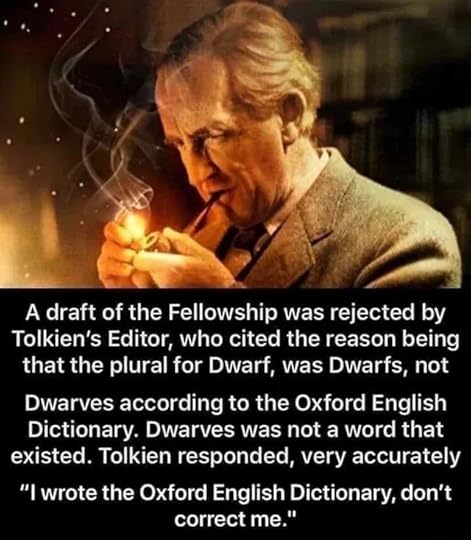
In 1925, he returned to Oxford as a professor of Anglo-Saxon. This is where he would write down The Hobbit, famously originally a bedtime story for his son, Christopher; and the first two parts of The Lord of the Rings.
And here, dear reader, is where I end his story.
CS LewisClive Staples Lewis was born on November 29, 1898, to Albert and Flora Lewis in Belfast, which is now in Northern Ireland. His father was a solicitor and his mother was descended from a priest and two bishops.
Lewis, like Tolkien, was an avid reader early on, and also like Tolkien, lost his mother at a young age, though in Flora’s case, it was cancer.
He was fascinated by anthropomorphic animals, a motif he carried into his works and he and his brother, Warnie, would create a fictional world that was run by animals. In the early years of his education, he had private tutors, but after his mother died, he went to Cherbourg House, where he developed an interest in mythology and the occult. It was also here that he abandoned his Christianity and became an atheist.
In his teens, he became obsessed with the literature and mythology of Scandinavia, as well as Greek mythology, and in 1916 was awarded a scholarship to University College, Oxford.
In Oxford, Lewis struggled with England and the English. Almost as a defence, he immersed himself in Irish mythology and language, and even met WB Yeats, a personal hero, twice because he was in Oxford as well. Living as an Irishman in England seemed to intensify his Irish pride and he actively sought out other Irishmen and revelled in the Celtic Revival going on at the time.
Lewis enrolled at Oxford in the summer of 1917 and joined the Officer Training Corps, and within months was shipped off to France. On his birthday, he arrived at the Somme.
Now, you might be thinking, ‘oh my god, they were at the same battle!,’ but no. The Battle of the Somme lasted from July 1- November 18, 1916. Tolkien was there almost the whole time, but he was already back in England for over a year by the time CS Lewis was shipped out. So Lewis would have seen the scars and trenches from the battle Tolkien fought in, but he was in the Somme Valley, not AT THE SOMME at the Somme.
He did, however, still see trench warfare and he did received injuries for mortar fire, for which he was sent back to England to convalesce in 1918. He resumed his studies and graduated with high marks over the next few years.
In 1924, he got a job as a tutor of Philosophy at University College, and in 1925 he was elected a Fellow and Tutor of English Literature at Magdalen College.
InklingsThe Inklings began at Trinity College, at Oxford, in 1931, by a student- Edward Tangye Lean. It was something of a writing and reading club, where other students and some members of the faculty, including both our boys, here, and a number of other people with their own Wikipedia pages, would write stories and read them aloud for feedback. When Lean graduated in 1933, Lewis transferred the club to Magdalen College.
Until 1949, the club would meet in Lewis’ apartments and also at the famous pub, the Eagle and Child. Tolkien’s Lord of the Rings and Lewis’ Out of the Silent Planet were workshopped at these meetings
As a sidenote, reading and writing groups still exist, online and in person. National Novel Writing Month has come under a lot of fire lately, and rightfully so, but I did make a lot of friends through that, as well as through the critique and feedback site, Scribophile, which I have discussed before.
Their FriendshipJRR Tolkien and CS Lewis met at a faculty event in 1926, and Lewis immortalised the moment by noting in his diary that Tolkien was a, ‘smooth, pale, fluent little chap [with] no harm in him: only needs a smack or so.’
Which honestly describes the majority of my own friends.
They hit it off pretty well, both being insufferable stuffy technophobes with no interest in current events and immense interest in folklore, mythology, fantasy, and their rich internal lives.
Again, the majority of my friends. I think I would have loved these guys, if I’d known them.
It’s a piece of writing advice to pick one member of your audience and write to please them. You can’t please everyone, and aiming at one person keeps your tone and message consistent. Stephen King famously writes for his sister, George RR Martin (if I recall correctly) writes for his wife. I write for Kate Whitaker, one of my first friends on Scribophile. And Tolkien and Lewis wrote for each other. For a long time, they were each other’s only audience and strongest support.
And, eventually, the other Inklings.
Now, you may have heard the story that Tolkien had been editing Lord of the Rings absolutely to death, so CS Lewis had it published behind his back. That was certainly the introduction I had to their friendship.
I don’t know where that runour started, and naturally, now that I’m looking for it, I can’t find any reference online.
So good, we can put it to bed.
One thing that does appear to be true is that Tolkien had a tendency to get bogged down in the structuring of his languages and neglected the actual story. It happens to the best of us, and we’re all grateful because those languages lend depth and realism to the world; but we should also thank Lewis, because without his intervention, Tolkien might never have actually finished the damn thing.
In return, Tolkien’s unshakable and fervent Catholicism inspired Lewis to convert to Christianity. Lewis became attracted back to the religion, viewing it as an elaborate mythology system, which appealed to him, but with the added bonus of being, in his words, real.
However, though they came to share faith, it would also be one of the factors that contributed to their decline.
The EndAll things eventually come to an end, and it happened for these two as it happens for most of us. For Tolkien and Lewis, there were three main reasons.
The first was the introduction of a man, named, Charles Williams. He was an already-published author and poet when he joined the Inklings in 1939. At first, the three men were good friends, with Tolkien remarking later that it was hard to remember conversations they’d had, because they all agreed so much. However, Williams and Lewis were already fans of each other by the time Williams arrived, and as they grew closer, they grew away from Tolkien.
The second was their individual personalities and approach to work. Tolkien worked very slowly and meticulously, and Lewis worked quickly and prolifically. Tolkien, much as I adore him, could be a bit stuffy and judgemental. Lewis famously did not put Narnia before the Inklings, despite writing the whole series during the time he hosted them, because he knew Tolkien found it shallow, a little silly, and even too inspired by Tolkien’s own work.
The final blow was Lewis’ relationship with a woman, named, Joy Davidman, whom he married in 1956. Joy Davidman was an American poet and author, with a fascinating history of her own. However, and unforgivably, she was a divorcee, something of which Tolkien and his deep faith disapproved strongly. Lewis married her in a registry office, initially so that she and her two sons, whom he also adopted, could stay in the country; but their relationship progressed later to a point where they married properly with a Christian ceremony. The Tolkiens were not invited to the registry wedding, and Lewis didn’t even tell him until long after it happened, which Tolkien later recollected as a very deep cut.
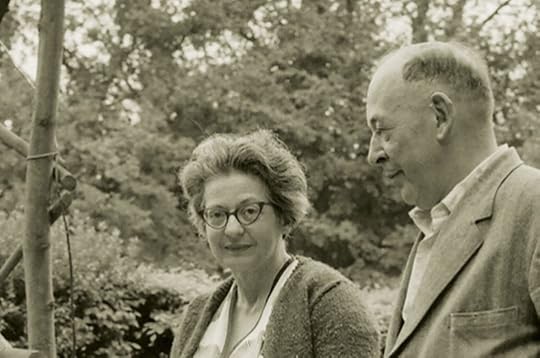
It’s not all doom and gloom, though. While their friendship never regained its pre-WWII closeness, they did remain friends of a sort, and in 1963, when CS Lewis fell ill with kidney failure, Tolkien visited him at home and in the hospital. And when Lewis died on 22 November (the same day as Aldous Huxley and JFK), Tolkien remarked that while he had already been feeling like an old tree losing its leaves, the loss was like ‘an axe-blow near the roots’. Both he and his son, Christopher, attended Lewis’ funeral.
Goals?I’ve mentioned a few times in this post that I see myself and several of my friends in both Tolkien and Lewis, and their relationship. Creatives often have strong personalities and quirks, and what draws us together can also be what drives us apart. All relationships have their challenges. So, I don’t really think that the decline in their friendship is a bad or even sad thing- it’s normal. And it didn’t even end, not really. So, I think the lesson to learn from them is what made them strong together- celebrating each other’s strengths, even the annoying ones, and also letting your friends’ strengths support your weak areas. So your worldbuilding is impeccable- great, but you gotta work on plot, too. So you pump out a lot of work really quick- cool, just make sure it has meat on its bones when it goes out there. Pick one person and let them be the whetstone that sharpens your sword.
But above all, be honest. If your friend has a new friend, that happens sometimes, it doesn’t mean they don’t still love you. If your friend doesn’t like your fiance, that’s awkward, but you still have to invite them to the wedding. Let them decide if they want to be there or not.
And don’t call your friend’s work shallow, lol. Listen, not all of us are out here trying to invent whole genres. Some of us are just trying to have fun. There is an audience for people who don’t want to learn new languages or memorise lineages. Let him have Father Christmas running around with his Jesus Lion, its’s fine. It’s going to be ok.
For even more Tolkien and Lewis goodness, check out my new Patreon! I’m in the UK this month for a wedding, but I will be visiting some places that were important to Tolkien in Birmingham and I will be posting some fun content over there.
January 1, 2025
One Word: Learn
A few years ago, I started a tradition of choosing one word to represent what I wanted to get out of that year. Last year, I chose ‘heal,’ and though I didn’t post it, I did do a lot of healing.
Just as a rundown, in 2023, my best friend died, I got a new cat, and I got a new job at Lush Cosmetics. So, 2024 was all about learning to figure out life with grief, my new baby, and retail. I spread myself among my other friendships, visited some people (and Lush stores) in the UK, started volunteering at our local museum, and dove back into my writing. I also got a lot of medical stuff sorted that I’ve been putting off for a long time. So, I did some literal healing, too.
One big lesson I got that I’m taking with me into 2025 is that, while I love structure and routine, my structure and routine needs to be able to shift and adjust. Think retrofitting a building in San Francisco so that it can stay strong and beautiful, and survive an earthquake.
Pre-retail, I would take all of December off to work on blog posts and my social media posts for the whole year. I have a pretty big raft of posts, and it does take absolutely every day of the month, especially New Year’s Eve and New Year’s Day.
Last year…that did not work. At all, lol. At the time, I thought I’d just have to power through and make it work. I tried writing in the break room, or before or after work, or on my days off. But there was just way too much to do, and all of my mental and physical strength was going toward not losing my mind during the holiday madness. And the way I streamline (shout out to One Word, 2020) my posts prevents me from posting some ahead of time. I post everything at once, because I know that if I try to post throughout the year, I’ll be playing catch-up the whole time, and eventually fall behind, get overwhelmed, and quit. Whatever it is that keeps people steady and focused for a whole year is either still broken in me or never existed to begin with.
So, I’m writing this blog post in August, lol. Obviously, there’s a lot left of 2024 to experience, and hopefully I will remember to update this post in December. The Halloween and Christmas collections are coming soon at work, which means more hours, more mental and physical energy at work, and less of me available for blogging. (Avon editing in January: not as many hours as I’d anticipated, as it turns out, lol) In October, I’m going to Guatemala, where I will have some medical procedures done, so it will be less restful than usual. It might feel odd to read this in January 2025 and see October 2024 referred to in the future tense, but that’s my point. I’m adjusting my structure and routine to fit my schedule and how I think my energy levels will be in the future. If I want to continue to have a blog, which I do; and if I want to keep my job and volunteer gig, which I do, I have to find a way for them to coexist, and that means heavily planning it all out.
I’ll be honest, I don’t really want to be thinking about blogging right now. I just finished outlining the rest of my series, the Beanseller Saga, and I want to get back to drafting! But the blog is important, too. And once I finish the blog and posts, I’ll be done for a year, and it can be doing its thing in the background while I’m drafting my stories. The blog and social media are the ‘business,’ how I connect with my audience. It’s worth it to take time to look after it, especially since I wasn’t able to post for a whole year.
So, this year, I’m focusing on learning, figuring out what I did well and not so well, and finding a more efficient way forward, while juggling everything in my life.
What is your One Word?
December 31, 2024
The Reading Nook: 2024 Roundup
~This post contains affiliate links. If you’re interested in any of these books, please consider purchasing through the link provided. It gives me a little bit of Jeff Bezos’ filthy, filthy lucre because writing full time is expensive, and he doesn’t need the money for more joyrides in space.  ~
~
I did really well, this year. I read a lot of books, way more than my average- 23!

Bridgerton Series, by Julia Quinn (all 8)
I doubt that by the Year of Our Lord 2025, I have to explain the Bridgerton series. Especially if this isn’t your first encounter with my content, you know what Bridgerton is. When she was still around, Breanna had read the books and advised me, under no uncertain phrasing, not to read the books. She was convinced that I would not like them.
She was largely right, romance is not my thing. But the tv show never lasts long enough, does it? That said, I did enjoy Benedict’s story (come on, Season 4!) and Gregoy’s next best. Though to be fair, Daphne’s still holds up, and Eloise’s has so many details that were teased in SEASON 1, I was actually pretty impressed with Shonda Rymes, which is not something I concede often.
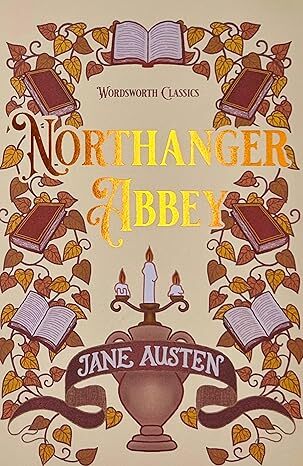
Northanger Abbey, by Jane Austen
AGAIN
I read Northanger Abbey again. Nothing new to report, but I did read it, so it goes on the list. If you want a full review, please let me know. I actually really want to do one.
I did read it because I like it, but also, I’m working on a thing.
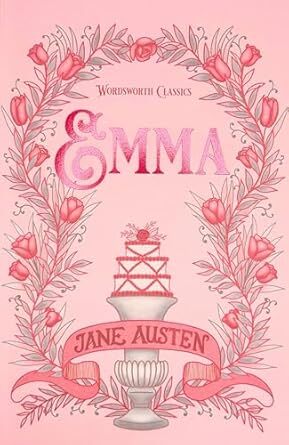
Continuing my efforts to finish the Jane Austen canon before passing judgement, I took a bite out of Emma. I usually enjoy the movie adaptations, so I had high hopes, but was ultimately disappointed.
*NOTE TO ADD YET AGAIN* Not every piece of media is for everyone. If you are a big Jane Austen fan, that’s great, you are in the majority. I’m not shitting on her as a person, a woman, an author, a satirist, a trailblazer; nor am I shitting on her work. I just don’t like most of it. Just not my thing.

THAT SAID, I didn’t hate Persuassion. Probably the next best after Northanger, in my opinion. High drama, a relatable protagonist, an awkward brooding hero who doesn’t get under my skin the way Darcy does.
8/10
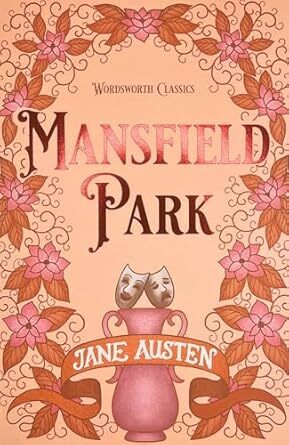
Mansfield Park, by Jane Austen
I did hate Mansfield Park. Dreary, boring, relentless.
Official Ranking of Jane Austen Books, According to Avon Van Hassel and No One Else:
Northanger Abbey Persuassion Emma Sense and Sensibility Pride and Prejudice Mansfield ParkI have not read Lady Susan, The Watsons, or Sanditon. I will get to them eventually, but I think I have all the data I need already.
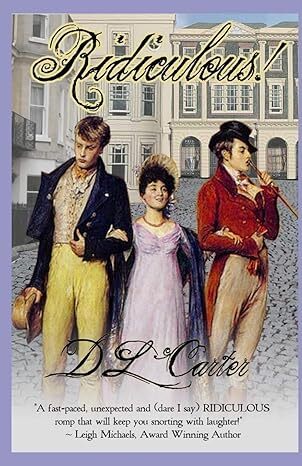
Now, Ridiculous!. I got this from BookBub a thousand years ago, got a few pages in, liked it, but then forgot about it. Came back this year during my Bridgerton withdrawal, and, you guys.
It’s a bit Twelfth Night, right. A woman is widowed and she and her three daughters find themselves destitute, so she throws herself on the mercy of a wealthy relative. He takes them in but forces them to be his servants. Then he dies, and the plain-Jane eldest daughter fakes her own death so that she can assume his identity and use his money to look after her mother and sisters. On her way to check out properties, she encounters a duke and his sister in a carriage crash on the road. She falls in love with the duke, but oh no! She’s supposed to be a man! So she has to keep it locked down. Meanwhile, the sister falls in love with her!
Chaos ensues. I love it.
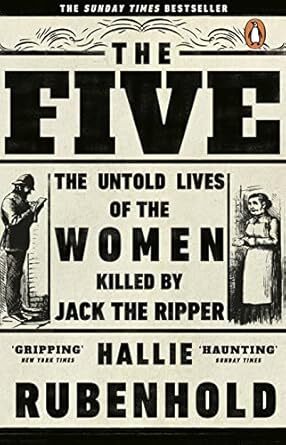
Tone shift.
This book is DEVASTATING. It cooked my brain, and I love it. To be clear, I didn’t enjoy it, it’s horrible. But it is fascinating.
I buried the lead, lol. The Five is the story of the Canonical Five victims of Jack the Ripper. Record and testimony-based evidence about their lives and who they were, and how they likely came to cross paths with the most notorious serial killer, arguably, ever.
Rough read.

This is a genderbent, paranormal, modern high school AU retelling of Northanger Abbey. I was excited, but to be honest, it fell a little short, for me. It didn’t really go all the way in any of its premises: some characters are genderbent and others aren’t, some characters keep their original personalities and some don’t. It is paranormal, but the bits that are paranormal are a departure from NA. I think it couldn’t quite decide what it wanted to be. Still fun, though.
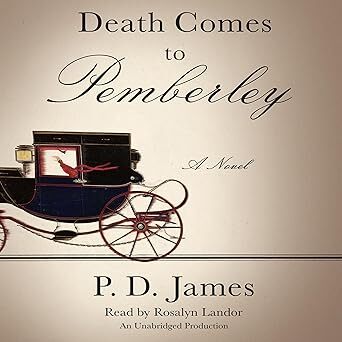
Death Comes to Pemberly, by PD James
I tried, guys. I keep trying to like Pride and Prejudice. I read Death Comes to Pemberley, I watched the show. I have read P&P, watched the 1995 and 2006, read Pride and Prejudice and Zombies, watched the movie. I’ve even listened to an audioplay, hoping that the narration was the part I don’t like.
Nope. I don’t like Lizzie, Darcy, or the story lol. I like Jane and Bingley. I want their spinoff.
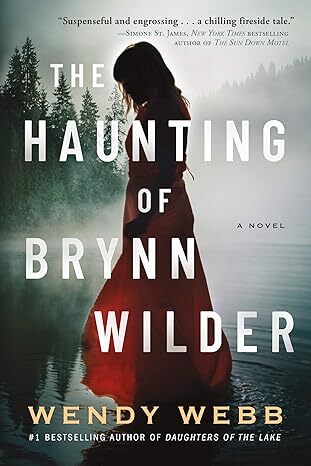
The Haunting of Bryn Wilder, by Wendy Webb
I discovered Wendy Webb a couple of years ago with Daughters of the Lake, which was very good. The Haunting of Brynn Wilder was less to my taste. I think I just like Kate better than Brynn. Brynn is a bit brooding, a bit suggestible, a bit cow-eyed. She has just lost her mother and that’s why she has gone on holiday, and that’s relatable. She goes on about it a little too much for my taste, but everyone handles grief differently, so I can forgive that. But she herself is a bit too Good and willing to believe the things she ought to be skeptical of. She is described as skeptical and curious, but her actual actions are too credulous to me. And a lot of the other characters are too earnest for me. I need a bit more conflict. It’s a bit Hallmark.
But that setting detail, though. Wendy Webb really shines through her love of the town and the hotel and the Great Lakes area.
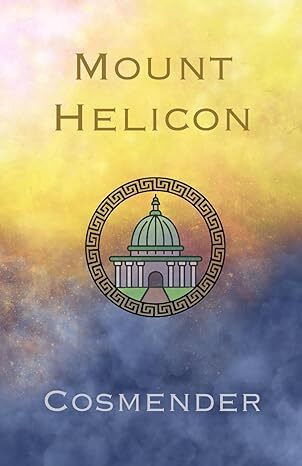
Y’all, my sister wrote a book! She worked on this for years, so please give it a look.
Durante Melias is a gifted but struggling chemist when he meets Urania, Eldest Sister of the Muses (dedicated blog post coming, but check out this post,) who decides to take him under her wing. Meanwhile, the Goddess of Luck, Tyche, falls under a curse of greed. Chaos ensues, throwing the entire Greek pantheon to the whims of their wildest traits. Think Disney’s Hercules meets BBC’s Atlantis meets the Everworld series? Did you guys ever read those?
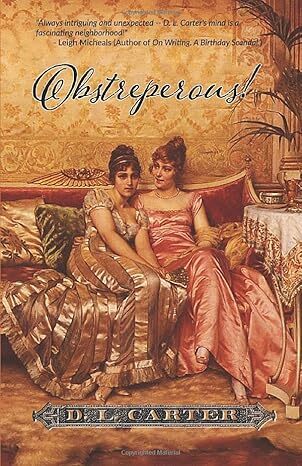
Obstreporous! is the sequel to Ridiculous!, focusing on the main characters’ little sisters and their summer spent together, looking for husbands and adventure. It takes place immediately after the events of Ridiculous! It is a bit Northanger Abbey, actually, with a holiday to a haunted abbey, awful suitors, complicated girl friendships, and overly adventurous girls.
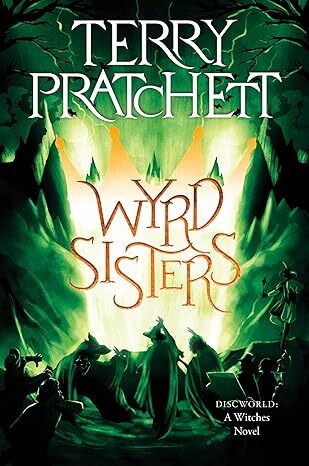
The Wyrd Sisters, by Sir Terry Pratchett
My 1.5 forray into Terry Pratchett. I KNOW, I KNOW. I should have read Sir Terry years ago. I didn’t, ok? No reason, I just didn’t. But now I have to because I used to be a massive Neil Gaiman fan, and he turned out to be a creep, so I have to slide to the Pratchett fandom if I want to carry on loving Good Omens, which is a pillar of my identity.
Anyway, I started with this one because it was recommended to be because of my witchy inclinations, but also because it is a retelling of Macbeth, which appeals to me, as Shakespeare girlie.
So fine, I’m a Terry Pratchett girl, now. Obviously, the witches are the main draw here, and I did really enjoy their Maiden/Mother/Crone and Wiccan/Wise Woman/Wicked Witch archetypes. It feels like Sir Terry really did his research and approached it from a respectful place. As someone who has lived all of those aspects, I didn’t feel mocked or dismissed, more I enjoyed the gags as someone who gets it. They each have their distinct personalities, inner lives, strengths and weaknesses, interpersonal interactions. I think they were handled really well. I enjoyed it.
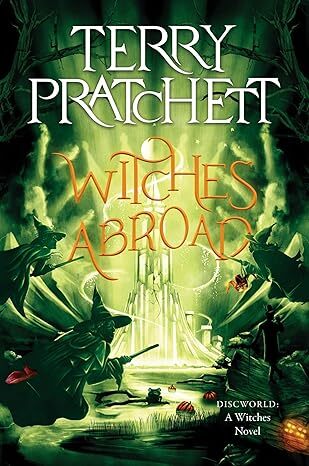
Witches Abroad, by Sir Terry Pratchett
Whoo boy, this one was a whirlwind. It’s a bunch of fairytale references in a trenchcoat, including the Wizard of Oz, Cinderella, the Princess and the Frog, Through the Looking Glass, and the Thursday Next series. The premise is that stories are kind of like fate, they are sentient in a way, and will impose themselves wherever they are allowed. We have a new witch archetype, the Godmother, as well as the fairytale trope of Good and Evil Sisters. We explore even more of the witches’ personalities, the ethics of magic, and a very New World brand of witchcraft that adds a sort of AHS flavour. If you know, you know.
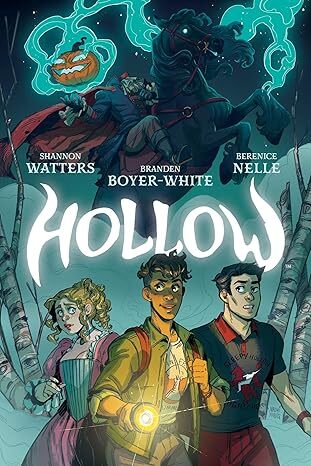
Hollow, by Shannon Watters, Branden Boyer-White, and Berenice Nell
So, while most of the books on this list were audiobooks, this one is a graphic novel! It was gifted to me a couple of years ago because my friend knows what a Sleepy Hollow nerd I am (dedicated blog post coming later this year!), and I love it. This is a genderbent (ish), sequel-retelling queer coming-of-age high school au lol. It makes sense in a way that Ghosted! doesn’t as much. It’s very cute and fun and has a hell of a twist that I in no way saw coming.
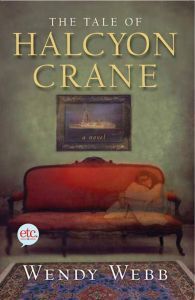
The Tale of Halcyon Crane, by Wendy Webb
I loved Daughters of the Lake, but this one is a very close second. It has everything you want in a spooky story- witchcraft, hauntings, repressed memories, family secrets, false identities, illicit affairs. It’s The Others meets Practical Magic meets The Secret Garden meets that one Marple with the poppies and cornflowers- you know the one. Halcyon Crane finds out that the mother she thought was dead her whole life only recently died, leaving her a house on a remote island. She returns to find out why she was taken away so young, and uncovers some very dark family secrets. It’s a fun spooky ride, I recommend reading it in the bath.
~~~~
So there you have it, the 23-ish books I read in 2024. Have you read any of these, do you have any thoughts on them? What did you read?



